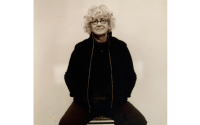In Memoriam: Remembering Art Collectors Lost, From Gustavo A. Cisneros to Rosa de la Cruz
David Castillo on Rosa de la Cruz

Rosa de la Cruz and her husband, Carlos, reshaped Miami’s art scene with a private museum devoted to their holdings, the de la Cruz Collection; she died this past February at 81. The couple collected artists deeply, including Felix Gonzalez-Torres, Christina Quarles, Vaughn Spann, Mark Bradford, and many others. Miami gallerist David Castillo, whose professional relationship with de la Cruz began in 2005, when he sold her a video by Quisqueya Henriquez, recalls the collector.
Rosa had a shifting point of view, and so the collection took some shifts. She and Carlos started collecting Latin American art and shifted into contemporary art; thereafter, she devoted herself entirely to that. It was really a matter of what spoke to her. The collection had a range from very difficult work to large-scale installations to sculptures and paintings, and she collected artists in depth. If she really liked an artist and wanted to support their work, it was typical of her to buy several, or even a dozen, works by that artist. She did so with her own funds.
A lot of private collections are part private, part public—they get public funding. But with hers, there was never any public funding to keep it open. It was always her money used to buy the artwork; her money used to send low-income students to Europe. That was one thing that set apart not just her collection but her as well: she was very transparent.
[When she opened her museum], the idea of private museums was not new in Miami, with the Rubells and the Margulies family. But she did it in a very different way. The millions of dollars it costs to run the space were her own funds. The vision she had for it was very much her own, but it was open to the public. The programming was always free.
She was engaged with art in a profound way. She was self-taught on the subjects of contemporary art and art history, like most collectors, but she went the extra mile. She read every article, every monograph on an artist. She really wanted to understand things in-depth, so that she wasn’t just looking at an object and saying, “Oh, I like it, it’s pretty.”
People mostly know her for her collecting, but she was somebody who had very special connections to her closest friends and family, and she enjoyed those intimate moments, whether they were about art or something else. With her, on the surface, what you saw is what you got. Basically, if she didn’t like a work of art or didn’t agree with someone, she made it known. And so, for that reason, I always valued her.
—As told to Alex Greenberger


